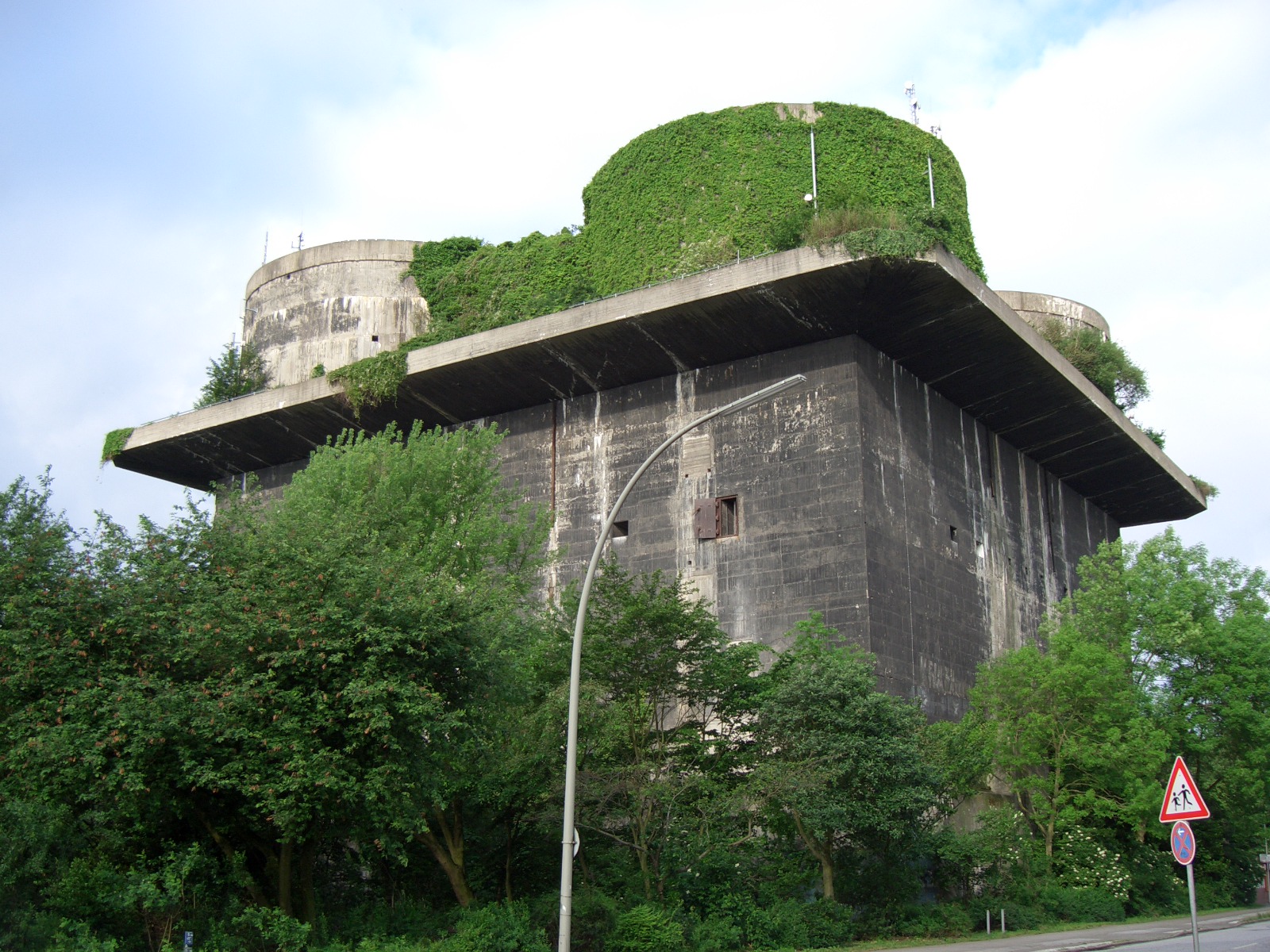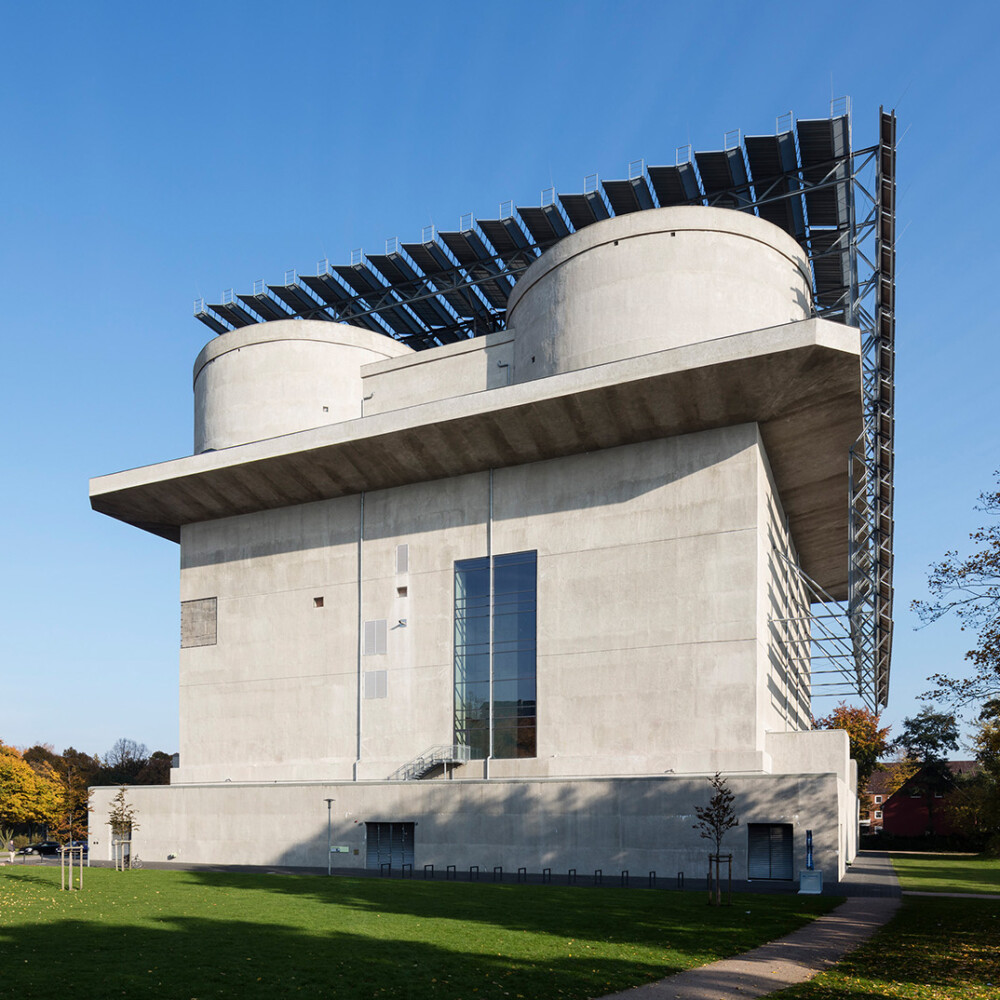37c3 Energy Bunker Wilhelmsburg
A beacon of the energy transition: For far too long, the old anti-aircraft bunker in Wilhelmsburg was an architectural eyesore. Today, the former wartime building is a globally unique example of the innovative use of renewable energy and a pioneer for other regional power plants around the world. The tour of the bunker shows the development from a wartime building to an innovative lighthouse project for the energy transition. Afterwards, you can enjoy the incomparable panoramic view over the city at Café vju.


History/change
Just a few years ago, Wilhelmsburg residents in Neuhöfer Straße were presented with a picture of an oppressive past: on an area the size of almost three and a half soccer pitches, a fenced-in dark grey and black concrete block towered 42 meters into the sky. A relic from the Second World War. An anti-aircraft bunker with a battered façade that spoke of hardship, fear and the futility of war without fitting into the here and now.
Between 1942 and 1944, both the reinforced concrete colossus in Wilhelmsburg and its counterpart on Heiligengeistfeld were built as a symbol of the strength of the German Reich at the time. In addition to protecting the civilian population from bombing raids, the two bunkers with their anti-aircraft guns (Flak for short) were primarily used for air defense. After the collapse of the Nazi regime, the Allies decided to put an end to the two megabunkers. In 1947, the British army blew up the interior of the flak bunker in Wilhelmsburg to make it unusable for military use again. The building sat unused for the next 60 years.
With the start of the International Building Exhibition (IBA), which was held in Hamburg from 2006 to 2013, the starting signal was finally given for the new use of the dilapidated war ruin: an eco-power plant was to be built in Wilhelmsburg. A vision of the future in a memorial from the past.
Technologies
Today, the energy bunker supplies green electricity and, above all, heat for the entire Reiherstieg district in Wilhelmsburg. A great example of how an entire district can be supplied with renewable energy. Various environmentally friendly technologies are used to ensure that Wilhelmsburg residents have a nice warm home and sufficient electricity.
Solar energy
Over 2,000 square meters of solar collectors and cells are installed on the roof and on the south side of the energy bunker, capturing the sun’s rays over Hamburg. The solar thermal system on the roof generates heat, while the photovoltaic system on the south side generates electricity.
Waste heat
Waste heat from a neighboring industrial area is fed into the energy bunker, where it is stored and passed on to consumers as heat.
Combined heat and power generation
Two combined heat and power plants (CHP) inside the energy bunker, powered by municipal biogas from the Hamburg sewage treatment plant, provide electricity and heat thanks to combined heat and power generation. To ensure that the heating in Wilhelmsburg never runs out, two peak-load boilers secure the heat supply at exceptional peak times.
Storage
The largest space in the energy bunker is taken up by the heat storage tank. This large buffer storage tank holds 2 million liters of water. This corresponds to 2,000 cubic meters. The water serves as a storage medium for the thermal energy that is fed in over the course of the day from industrial waste heat, solar collectors and CHP units. The storage tank itself is particularly well insulated and thus ensures that there is enough heat for the Elbe island, especially at peak times.
Local use
The energy bunker in Wilhelmsburg has an impressive track record: At a good 16,500 MWh, the total output of heat generation corresponds to the consumption of more than 2,000 households and can be further expanded in the future. In addition, the bunker generates as much electricity from renewable sources as around 1,000 Hamburg households consume. In this way, almost 5,000 tons of climate-damaging CO2 are saved every year. What’s more, it’s a really good feeling to know that the electricity from the socket and the heat from the heating system were produced just around the corner.
Details
- Tours:
- Day 3 (29.12.) 13:20 hours English
- Day 3 (29.12.) 14:35 hours German
- Duration: 1 hour
- Sprache: German, English
- Cost: free
- Meet at Hackertours Desk: at time given above
- Alternatively, you can come to the location directly. In this case, please let us know by writing us at ticket@hackertours.hamburg.ccc.de. Please arrive at the location no later one hour after the time given above. We will be meeting at the building entrance. Going there by public transport involves a number of changes between trains and busses, so we recommend you travel with the group starting at the Hackertours Desk.
- Location: Energiebunker, Bus 13 stop Veringstraße
- Operator: Hamburger Energiewerke GmbH
- Accessibilty: elevator to all levels
